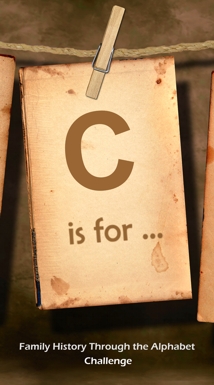DETERMINED to find more information.

DETERMINED to break down the brick walls.
DEDICATED to keep looking.
The brick wall surrounding the ancestors of my great grandmother, Agnes Scott, remained high and solid for many many decades. However with determination and dedication the bricks have begun to fall, the wall has weakened, falling in places but it still remains in place. However, there are still more questions than answers!
Agnes Scott was very private and did not speak about her upbringing or parentage. I think I now understand why.
Removing the first brick
Although the family had always lived in the Southern States, the marriage certificate of Agnes Foy to William Scott in 1906 showed that Agnes was born c1886 in Ipswich, Queensland and her parents were Richard Foy and Charlotte Drayton.
It was thought by some family members that Richard Foy was of Chinese origin and had worked on the goldfields. The droopy eyes of aging ancestors and the name "Foy" seemed to support the story...........but how wrong it was.
I struggled to find a birth certificate for Agnes Foy but located the birth certificate for her sister May, which strangely was registered once with no father and secondly with Richard Foy listed as the father. I assume that Richard was added later? This soon lead me to Agnes' birth certificate with the mother listed as Charlotte Drayton but no father listed.
But why couldn't I find a marriage certificate?
The brick wall remained stable for many years
Nothing. Every lead I followed went nowhere.
No immigration records could be located for either Richard Foy or Charlotte Drayton. Still no marriage certificate. I had searched all states.
I had found a Richard Foy who had departed Cooktown and arrived in Sydney in 1896 and also a Richard Foy who died at sea aboard the
Kalgoorlie in 1898............but still no definite link to my Richard.
But I was DETERMINED.
 |
This photo was unidentified for many years
but it is now believed to be Richard, Charlotte
and baby Agnes taken in 1886
|
One section of the brick wall begins to crumble
The death certificate of Richard Foy revealed no new information, except he was a tanner. However the Probate for Richard Foy was very interesting and confirmed that he was the same man who died aboard the
Kalgoorlie and that he was also the father of Agnes and May. It also mentioned that he had formerly lived in Ballarat. I had confirmed a residence and date of death!
In my searching I also came across a Charlotte Sayers who married a Richard Foy in 1893 and also a Virginia Drayton who married a Richard Foy in 1896. Both marriages occurred in Ballarat. Surely this was too coincidental not be a lead? But I didn't want to get my hopes up as I had been disappointed many times in the past. I ordered both certificates hoping that I was not wasting my money.
My family and dog got a fright and I am sure the neighbours heard too, as my shouts of triumph rang out boisterously. The certificates showed that Charlotte and Virginia had the same parents. They were sisters! Breakthrough. The bricks came falling down................for a while anyway.
The story of Richard and Charlotte is beyond the scope of this blog but is one that I will tell another time. It is tale of struggles, hardship and sadness but I like to think it is also romantic.
I found out alot of new information. However, the mortar has again hardened and bricks have stopped falling but I am determined and dedicated in my search. A termite can destroy a whole house, but it takes time.
Some bricks that need to be removed
- How and When did Richard come to Australia? I believe it was after 1873. Richard was born 1849 Galway, Ireland and died 1898 aboard the Kalgoorlie. His parents were Patrick Foy and Mary Conroy.
- Richards siblings seem to have disappeared after 1871. Cath b1852, Ireland - Margaret b1853 Warrington, Lancashire - John b1855 Warrington, Lancashire - Mary Ann b1858 Warrington, Lancashire - Agnes b1860 also in Warrington, Lancashire.
- Although I know that Patrick Foy and Mary Conroy were both born in Ireland, I have been unable to find out anything about their parents.
- Charlottes father was born about 1813 in Philadelphia, Pennsylvania, US according to his death certificate. According to hospital records, he came to Australia aboard the Sophia in 1852, which sailed from Nantucket. His marriage, also in 1852, was registered under the name of Raiton. However I cannot locate any information about his origins or parents.
 |
| Click on the picture to see more "D' posts |



,+Lorna,+Mabel,+James+and+Hazel+Pilgrim+(and+Bower+the+dog).JPG)




.jpg)




